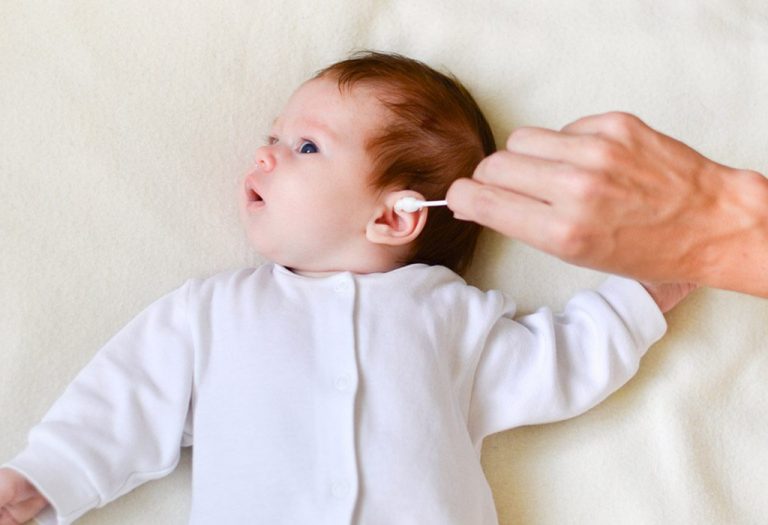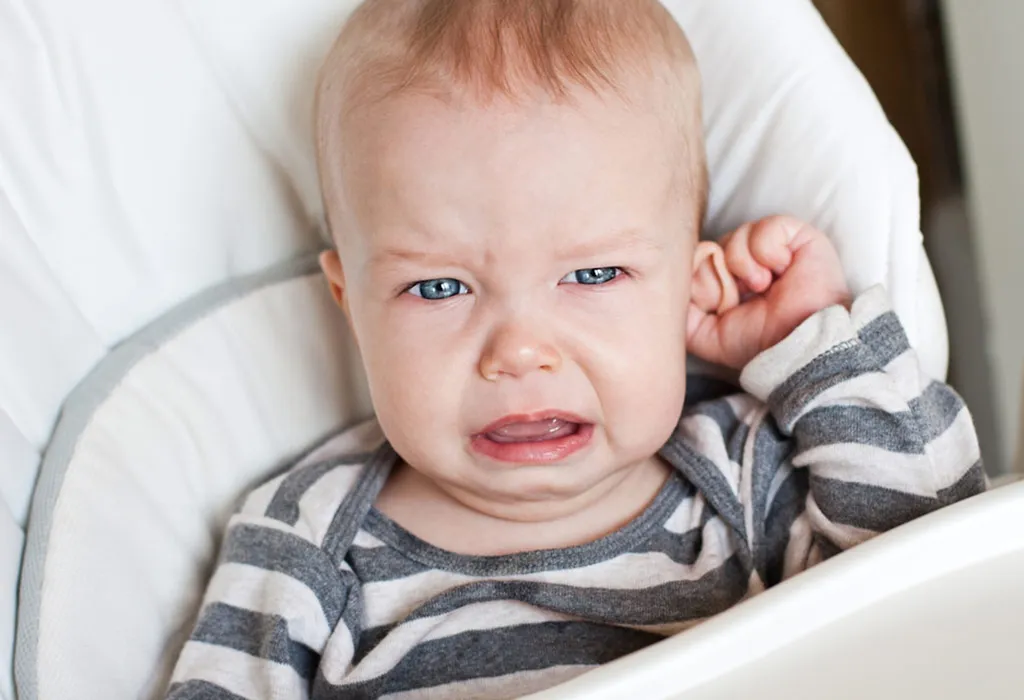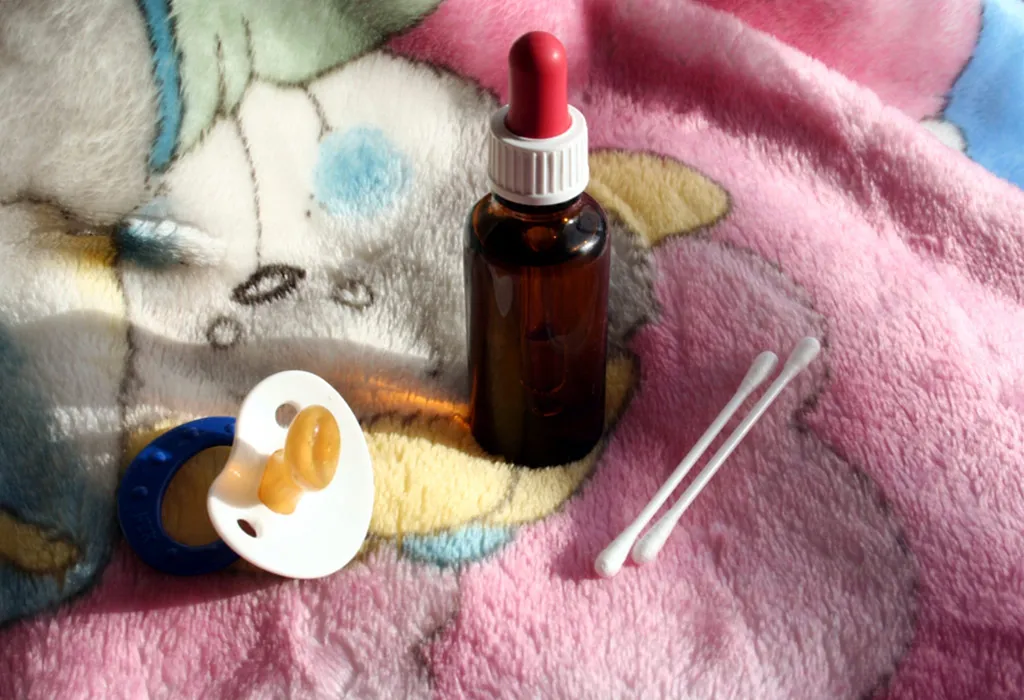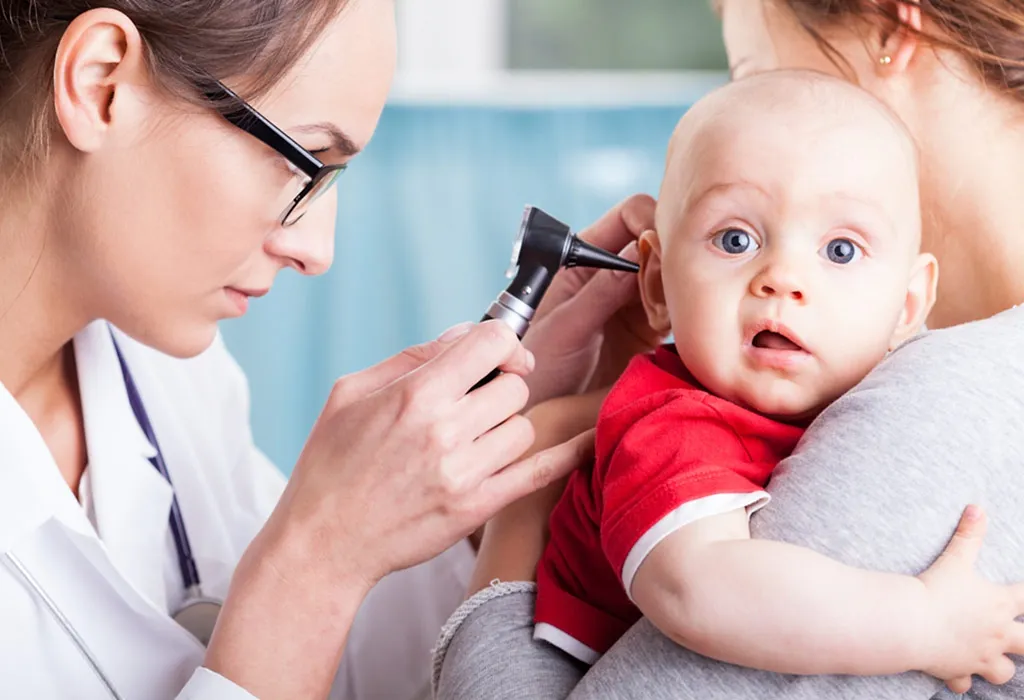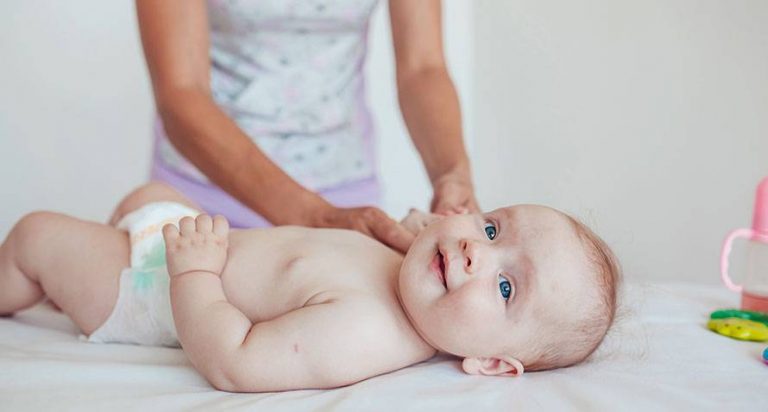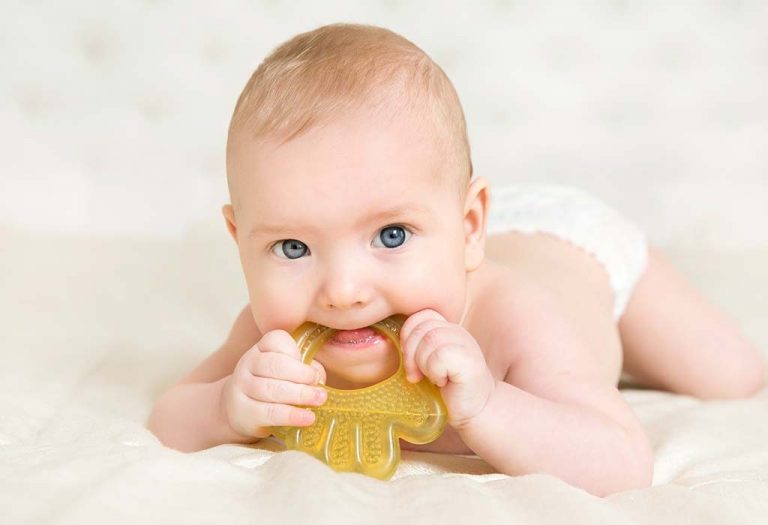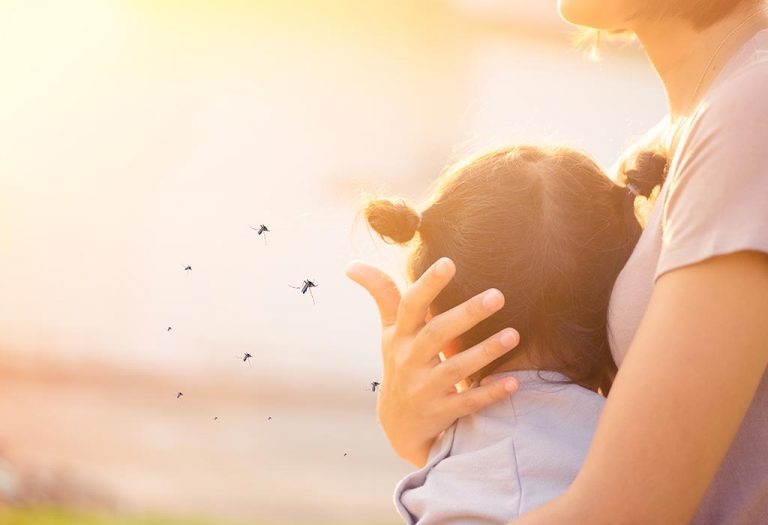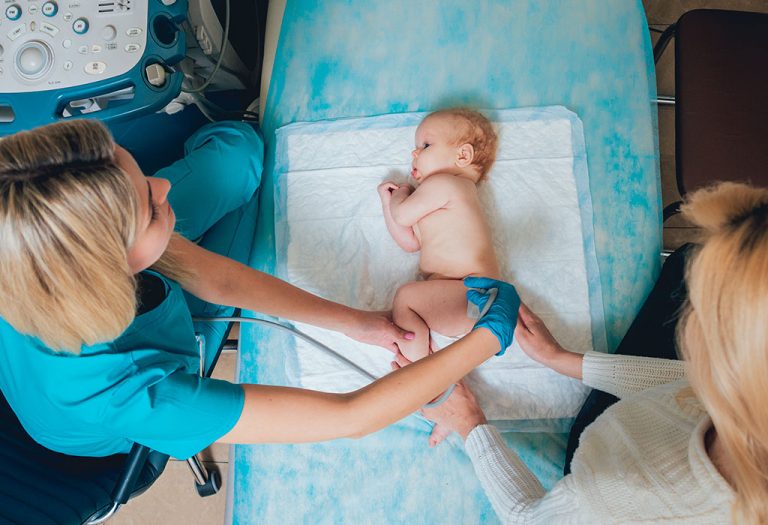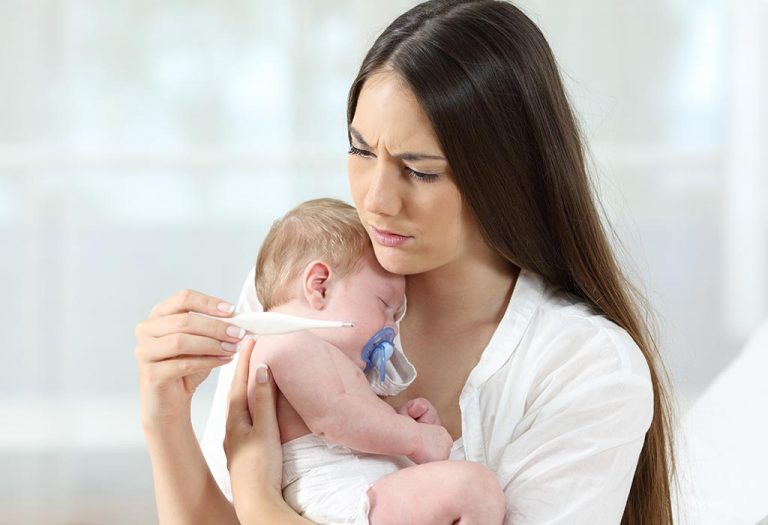How Do You Clean Infant Ears?

As a new parent, you will have a lot of responsibilities towards your child – cleaning his ears being one of them. Yes, it may come as a surprise, but you will pay attention to the little things (like cleaning his ears or trimming his fingernails), which may become one of the reasons for his health issues. When it comes to cleaning your baby’s ears, safety comes first. There will be earwax build-up in your infant’s ears, and it is common. There are a lot of ways in which you can clean your baby’s ears, but the key is to find a method that works best for you and your child.
What Is Earwax?
Earwax, which is also known as cerumen, is a sticky, gooey material produced inside the ear. It consists of dead skin cells and is secreted by the glands situated in the lining of the ear. As irritating as earwax might be, it is actually a sign of the normalcy of your baby’s physiology. Furthermore, the secretion of earwax is the body’s natural method of preventing water or external infection from entering inside.
How Much Ear Wax Is Normal for a Baby?
While earwax may be secreted generously from a baby’s ears, excessive ear wax in babies is generally uncommon. The amount of wax secreted from each ear may not always be the same – one ear may have more earwax than the other. The earwax secreted or produced is considered healthy earwax when the paediatrician is able to see the baby’s eardrums clearly through the wax. If the ear canal is totally blocked by the hardened earwax or there’s a yellowish flaky wax causing discomfort to your baby, then that may be a problem.
Why Is It Important to Clean Baby’s Ear?
Cleaning a baby’s ears is important to maintain ear hygiene, prevent infections, and ensure overall health. Here’s why:
1. Preventing Wax Buildup
Earwax is a natural substance that helps protect the ear canal from dust, debris, and bacteria. However, if too much wax accumulates, it can harden and block the ear canal, leading to discomfort, itching, and even temporary hearing loss. Regular cleaning of newborns’ ears helps prevent excessive wax buildup, ensuring that the ear canal remains clear and functional.
2. Reducing the Risk of Infections
Babies are more susceptible to ear infections due to their developing immune systems and the shape of their ear canals. Dirt, bacteria, or moisture trapped in the ear can create an environment where infections like otitis media (middle ear infection) can thrive. By keeping the ears clean, you minimize the risk of infections that can cause pain, fever, and fussiness in your baby.
3. Maintaining General Ear Hygiene
Ears can collect dust, dirt, and other small particles, especially as babies start to crawl or explore their surroundings. Regular cleaning helps remove these foreign particles, keeping the ear canal clean and reducing the chances of irritation or infection. Good ear hygiene is an essential part of overall cleanliness and health for your baby.
4. Supporting Healthy Hearing
Clear hearing is crucial for a baby’s development, especially as they begin to recognize and respond to sounds and voices around them. If earwax or debris blocks the ear canal, it can interfere with their ability to hear properly. By keeping the ears clean, you help ensure that your baby can hear clearly, which supports their speech and language development.
5. Preventing Odor
Accumulated earwax, trapped moisture, or an ear infection can sometimes produce an unpleasant odor. This can be uncomfortable for the baby and concerning for parents. Regular cleaning of wax from baby’s ear helps prevent the buildup of substances that might lead to odor, keeping your baby’s ears fresh and free from any bad smells.
My Baby’s Ear Is Hurting – Is It Because of Earwax or Ear Infection?
When babies experience discomfort in their ears, they tend to start rubbing and pulling their ears and even poking their fingers inside their ears to scratch the ears and to get some relief from the irritation. This is a general reaction to the uncomfortable nature of earwax. However, a build-up of earwax does not result in any fever or sleeping problems, since earwax is a normal secretion.
Large amounts of earwax can be easily spotted by simply looking into the ear. Sometimes, there might be a little brownish coloured fluid discharge from the ear present inside too. If your baby is in pain, or the earwax looks different than usual, then there is a chance that the pain is from an ear infection. The obvious sign of an infection is high fever or milky white coloured pus draining out from the baby’s ears. This could also mean a perforated eardrum, which can cause intense pain and discomfort due to the earwax discharge. Among other things, if your baby becomes irritable and starts crying when he lies down and also suffers from diarrhoea, these are tell-tale signs of an ear infection and you should show your baby to a paediatrician as soon as possible.
Reasons for Earwax Build-Up in an Infant’s Ears
Earwax building up is one of the natural processes of the human body, similar to that of hair growth. An infant’s ears generate wax all the time as a protective mechanism for the eardrum. Once generated, the earwax is gradually pushed out of the ear via the ear canal. This is done by extremely tiny, hair-like structures inside the ear canal called cilia.
Since the skin growth inside the ear is also outward, the earwax gets pushed out of the ear canal. Generally gooey and slightly fluid in nature, earwax is known to get denser if your baby isn’t consuming enough fluids. Similarly, when the natural tendency to push wax outside is countered by attempting to clean it with cotton swabs, the action generally results in pushing the earwax deeper within the ear canal. This starts creating an earwax buildup, resulting in a blockage of the ear canal.
How to Clean Your Child’s Ears
There are enough and more ways to clean a baby’s ears. Here is how to safely clean baby ears – try out the one which works best for your child!
1. Using a Washcloth
The best way to remove earwax is by using a soft washcloth dipped in warm water. First, dip the washcloth in warm water and squeeze it out to get rid of excess water. Then, use it to wipe around the outer area of the baby’s ear to clean any earwax that’s trickled outside gradually. Most of the wax will fall out on its own. The remaining can be wiped off. Do not push the washcloth inside the ear canal. Take your baby to your paediatrician and let him take a look at his ears. Your paediatrician might scrape out the wax inside the ear using a tiny tool.
2. Using Baby Ear Drops
If the build-up is deep, you might need to use ear drops. Before administering ear drops, ensure that you use the ones which your baby’s paediatrician recommends. Calm down your baby and keep him engaged in some activity; otherwise, choose a time of the day when your baby is usually silent and rested. Hold the bottle of ear drops in your palms to slightly warm it up. Lay your baby on your lap, with the blocked ear facing towards you. Use an eyedropper and fill it up with the solution in the bottle.
Place the dropper close to the baby’s ear and drop the solution gradually until the baby’s ear canal is full. Wait a few minutes for the solution to settle inside the ear. Your baby may feel a weird sensation, so keep him calm. The ear drops will soften the wax in the canal and then flow out of the ear. Next, dip a washcloth in warm water, squeeze out excess water, and clean up any excess drops and wax that flow out of the ear. Do not try to put the washcloth inside the baby’s ears. This treatment must be repeated for at least three to five days, as your doctor recommends.
Safety Tips to Follow When Cleaning Your Baby’s Ears
You can try the methods mentioned above to clean your baby’s ears. It is, however, important to remember what not to do and what not to use when cleaning a baby’s ears. The cardinal rule of cleaning an infant’s ears asks parents to refrain from using cotton buds. As convenient as they might seem, cotton swabs are known to push the earwax further into the ear canal. This worsens the problems and results in earwax build-up, leading to canal blockage. The same goes for using fingers, too. Sticking anything inside the ear canal can result in wax build-up or can cause harm to the eardrum and may even rupture it. If the earwax problem starts getting worse, it is better to use baby earwax drops after consulting with your baby’s paediatrician.
Precautions to Take While Cleaning Your Baby’s Ears
As simple as it may sound, cleaning baby ears is not an easy task and the slightest mistake can cause your baby intense pain. Here are some dos and don’ts you should follow while cleaning your baby’s ears.
Dos
- Make sure your baby is calm and engaged.
- Use a clean washcloth.
- Consult a doctor if the wax build-up is excessive.
Don’ts
- Don’t use any pointed objects inside the ears.
- Avoid inserting cotton swabs or earbuds.
- Don’t use cold water to drain out the excess earwax.
- Don’t spray water or any liquid inside the ear with force.
- Do not clean your ears too often or too hard.
When to Visit a Doctor
Take your baby to a paediatrician when there is an excessive build-up of earwax in your baby’s ears, and you are unable to remove the wax with the remedies mentioned above. Also, if there are symptoms of infection, such as drainage of milky fluid, ear pain, fever, or even hearing loss after the removal of wax, check with your baby’s doctor as soon as possible.
FAQs
1. Should I clean my baby’s ears if they have a cold?
When a baby has a cold, the Eustachian tubes, which connect the middle ear to the back of the throat, can become blocked or swollen, leading to fluid buildup in the ear. It’s important to be gentle when cleaning the outer ear during cold and avoid inserting anything into the ear canal. If your baby is in pain or fluid is draining from the ear, consult a pediatrician.
2. Is it normal for a baby’s earwax to change color?
Yes, the color of a baby’s earwax can vary from yellow to brown or even slightly orange. These color changes are typically normal and reflect the earwax’s function in trapping dirt and bacteria. However, if the wax is greenish or has a foul odor, it might indicate an infection, and you should consult a doctor.
3. How often should I clean my baby’s ears?
You don’t need to clean your baby’s ears every day. Typically, cleaning the outer part of the ear during bath time is sufficient. The ear canal is self-cleaning, and over-cleaning can lead to irritation or removal of too much protective earwax.
4. Can water get trapped in my baby’s ears during bath time?
Yes, water can sometimes get trapped in a baby’s ears during bath time. To prevent this, gently tilt your baby’s head to the side after a bath to let the water drain out. If water remains trapped, it can create a moist environment conducive to infections, so it’s important to dry the outer ear carefully.
Baby earwax is not harmful unless it collects in abnormal quantities or gets infected. Choosing safe and careful measures to clean your baby’s ears will prove to be beneficial. However, if they don’t work and you notice anything out of the ordinary with regards to your baby’s health, check with your baby’s paediatrician.
References/Resources:
1. Cleaning your baby’s ears, eyes and nose; Pregnancy, Birth & Baby; https://www.pregnancybirthbaby.org.au/cleaning-your-babys-ears-eyes-and-nose
2. Ameen. Z, Chounthirath. T, Smith. G, Jatana. K; Pediatric Cotton-Tip Applicator-Related Ear Injury Treated in United States Emergency Departments, 1990-2010; The Journal of Pediatrics; https://www.jpeds.com/article/S0022-3476(17)30461-4/fulltext; May 2017
3. Dealing With Earwax (Cerumen); Nemours Kids Health; https://kidshealth.org/en/parents/earwax.html
4. Earwax Buildup; Seattle Children’s Hospital; https://www.seattlechildrens.org/conditions/a-z/earwax-buildup/
5. How to Give Ear Drops to a Child; American Academy of Pediatrics; https://www.healthychildren.org/English/safety-prevention/at-home/medication-safety/Pages/How-to-Give-Ear-Drops.aspx
6. McCarter. D, Courtney. A, Pollart. S; Cerumen Impaction; American Family Physician; https://www.aafp.org/pubs/afp/issues/2007/0515/p1523.html; May 2007
7. Earwax Buildup; American Academy of Pediatrics; https://www.healthychildren.org/English/tips-tools/symptom-checker/Pages/symptomviewer.aspx?symptom=Earwax+Buildup
Also Read:
How to Clean Baby’s Tongue?
How to Brush Babys Teeth?
How to Clean your Baby’s Genitals?
How to Wash a Baby’s Face Properly?
Was This Article Helpful?
Parenting is a huge responsibility, for you as a caregiver, but also for us as a parenting content platform. We understand that and take our responsibility of creating credible content seriously. FirstCry Parenting articles are written and published only after extensive research using factually sound references to deliver quality content that is accurate, validated by experts, and completely reliable. To understand how we go about creating content that is credible, read our editorial policy here.






